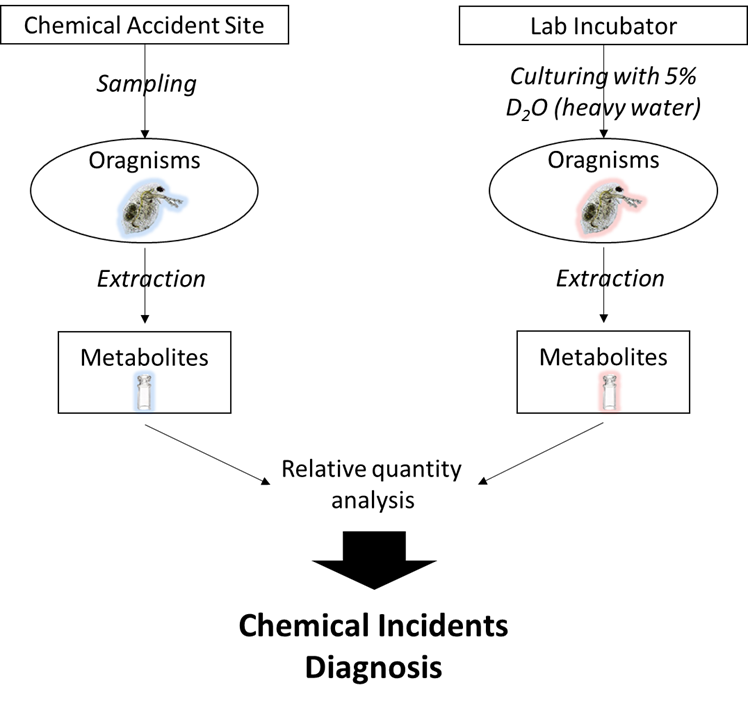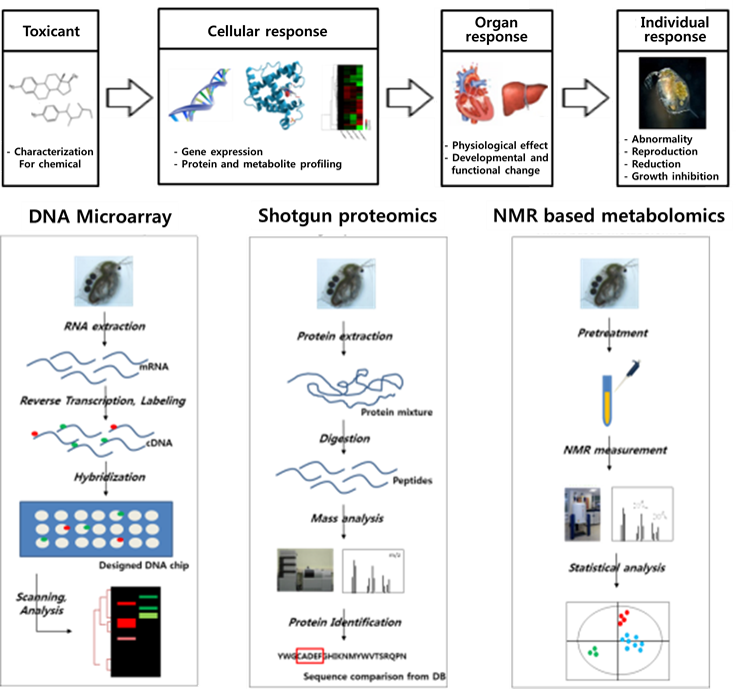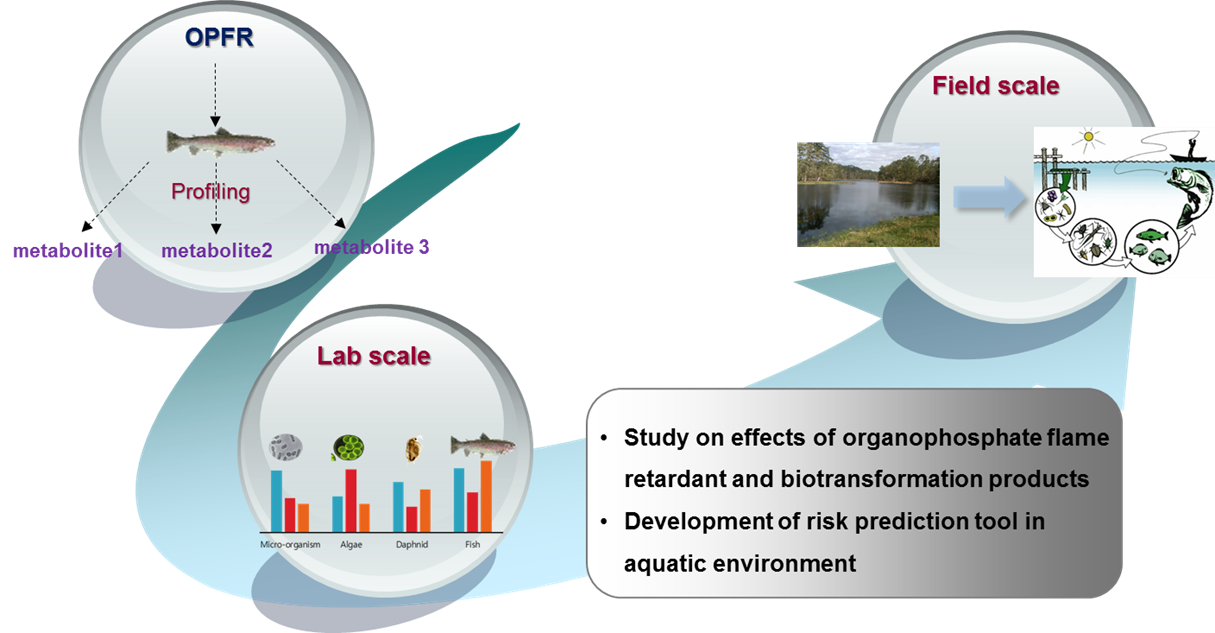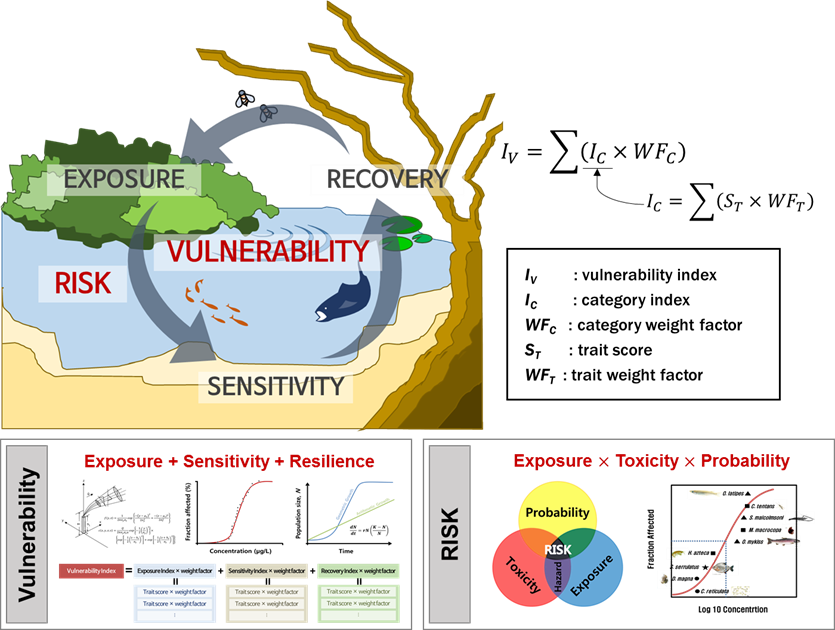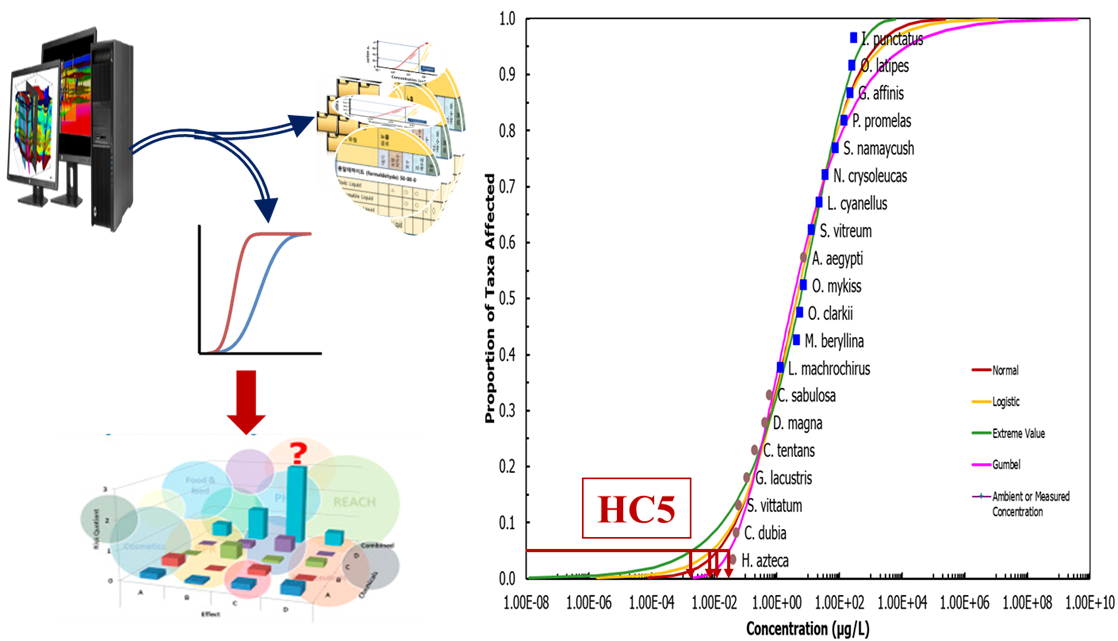Research area
Research area 1
[ Integrated impact assessment of ecosystem affected by chemical incidents ]
Omics-based impact assessment of chemical accident for crops
- Development of quantitative index and biomarker based on the non-targeted metabolic profiling
- Anchoring Integrated-omics with physiological effects
- Validation of biomarker candidates using ROC curve
- Field applicability test
Chemical accident diagnosis: aquatic system
- Deuterium (D, 2H) indication
- Relative quantity analysis
Developing vegetation damage diagnostic technique based on photochemical vegetation indices (VI)
- Develop photochemical vegetation indices using multispectral camera
- Correct topograph and atmosphere effects
- Construct time-scale vegetation indices of control area, colony of above ‘식생보전등급 3등급‘ species
- Examine degree of vegetation damage after chemical accident by comparing control database
Research area 2
[ Emerging contaminants ]
Multi-generational exposure of PhACs: AOP Study
- Pharmaceutically Active Compounds (PhACs)
- Adverse outcome pathway study
- Toxic effect in multi-generational period
- Maternal transfer to next generation
Perfluorinated Compounds : Degradation by Electron Beam
- Efficiency for degrading PFCs in water
- Applicability of electron beam for removal of pollutants
Organophosphate flame retardants(OPFRs) : Fate and toxicity
- Biotransformation products and biotransformation pathways
- Occurrence of organophosphate flame retardants and biotransformation products in Korean water
- Microcosm study
Research area 3
[ Risk assessment ]
Ecological Assessment
- Protection of aquatic ecosystem
- Development of system assessing scenario-based ecological risk and vulnerability
- Construction of toxicity predictive model
- Derivation of water quality criteria
- Scenario and site-specific ecological risk assessment
- Species sensitivity distribution (SSD)
- Aquatic ecological risk assessment of chemical mixtures
PM 2.5: Human Health
- Classification based on source/behavior/chemical properties


